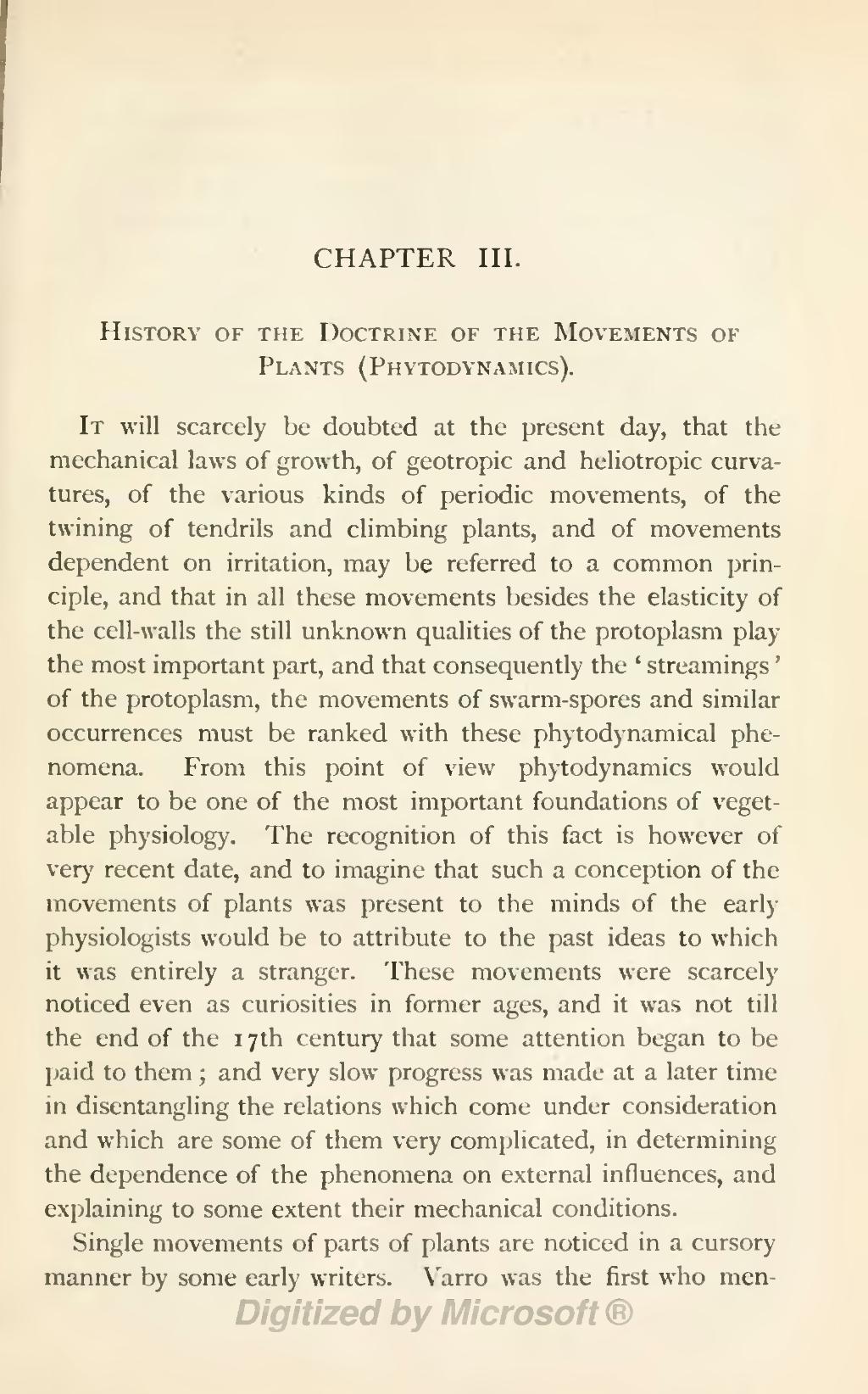CHAPTER III.
History of the Doctrine of the Movements of Plants (Phytodynamics).
It will scarcely be doubted at the present day, that the mechanical laws of growth, of geotropic and heliotropic curvatures, of the various kinds of periodic movements, of the twining of tendrils and climbing plants, and of movements dependent on irritation, may be referred to a common principle, and that in all these movements besides the elasticity of the cell-walls the still unknown qualities of the protoplasm play the most important part, and that consequently the 'streamings' of the protoplasm, the movements of swarm-spores and similar occurrences must be ranked with these phytodynamical phenomena. From this point of view phytodynamics would appear to be one of the most important foundations of vegetable physiology. The recognition of this fact is however of very recent date, and to imagine that such a conception of the movements of plants was present to the minds of the early physiologists would be to attribute to the past ideas to which it was entirely a stranger. These movements were scarcely noticed even as curiosities in former ages, and it was not till the end of the 17th century that some attention began to be paid to them; and very slow progress was made at a later time in disentangling the relations which come under consideration and which are some of them very complicated, in determining the dependence of the phenomena on external influences, and explaining to some extent their mechanical conditions.
Single movements of parts of plants are noticed in a cursory manner by some early writers. Varro was the first who men-
